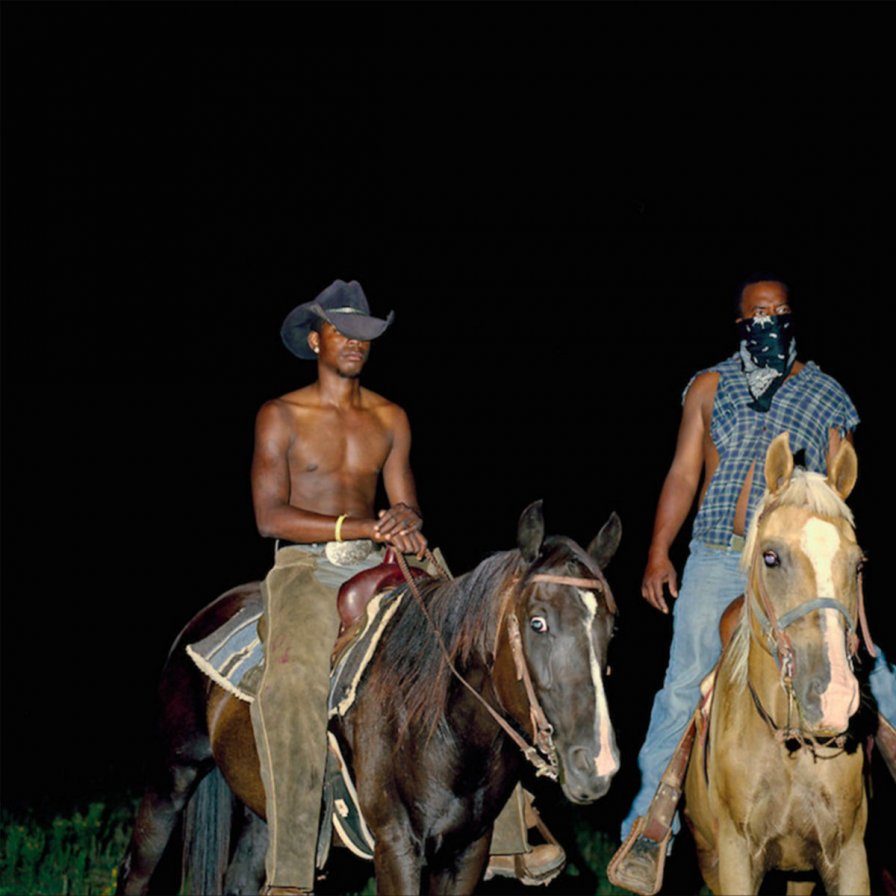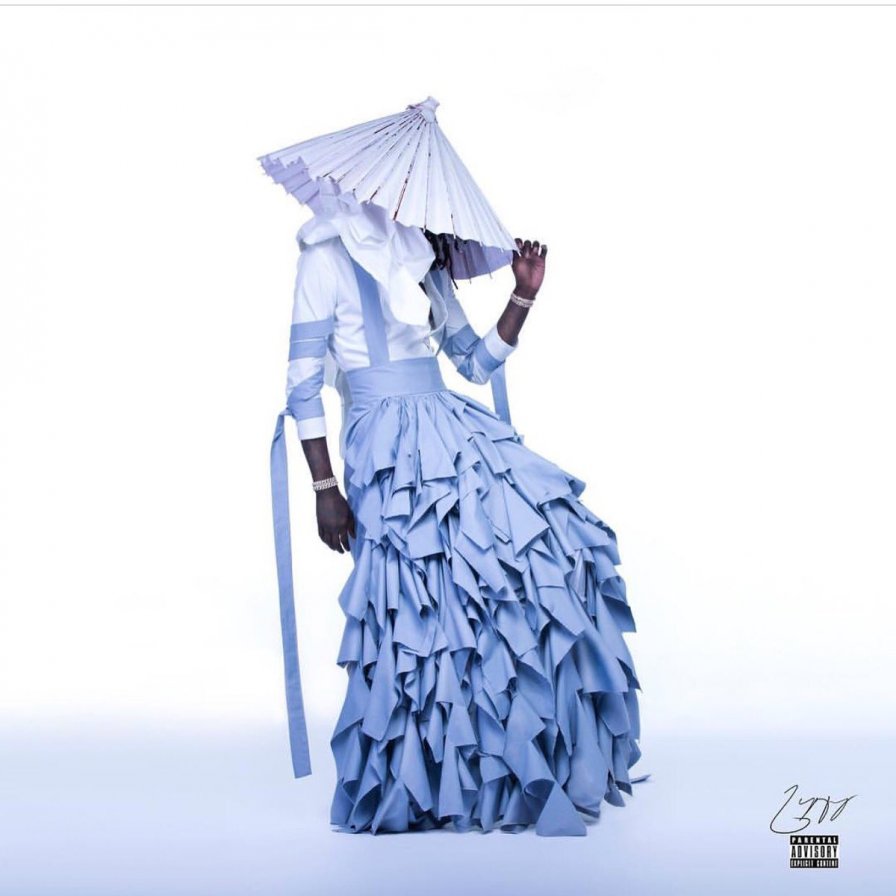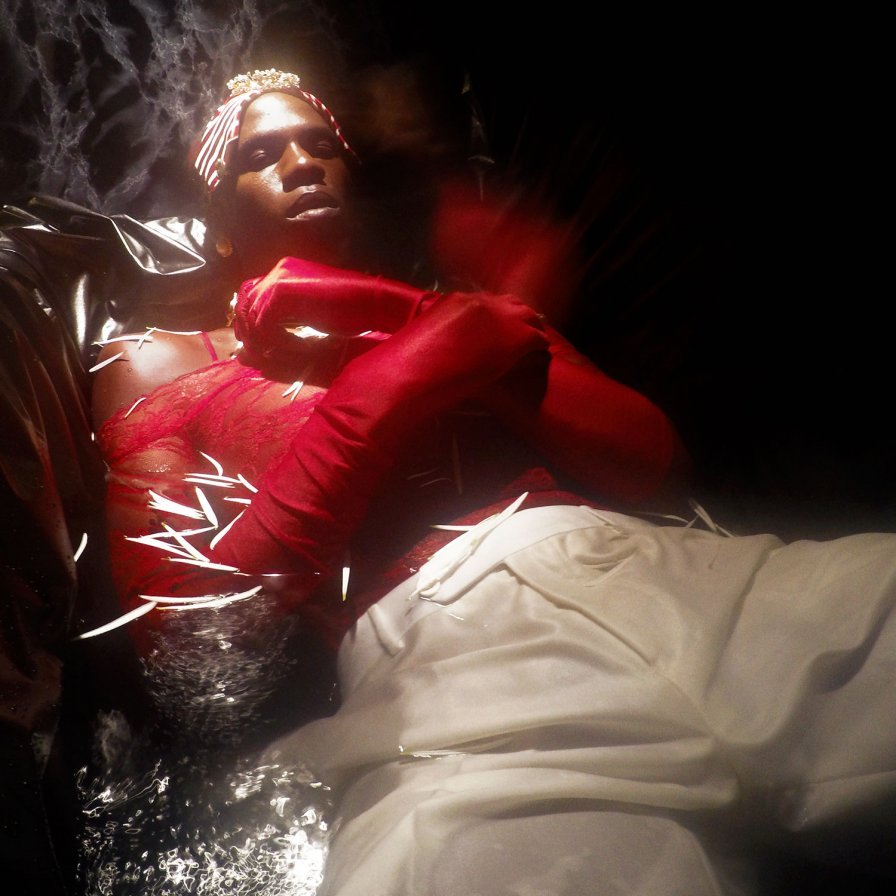We celebrate the end of the year the only way we know how: through lists, essays, and mixes. Join us as we explore the music that helped define the year. More from this series
20
Jeremih
Late Nights: The Album
[Def Jam]

Sometimes it’s so late it starts to be early. Not so on Jeremih’s Late Nights. Here, the night is perpetual, and it’s always a balmy summer one, with the loose sense of sleepless, aimless wandering back to the apartment never dissipating. Sure, every single one of these songs banged like the middle of a party, shining so bright that no album I heard this year was more of a consistently unfurling pleasure shot to the center of the brain. But these songs were somehow better suited to that liminal moment of coming up from the basement club to the hush of cars pursing rainwater on the street. There was an expectant neon buzz to how the melodies dripped over back beat infrastructure. It was buffeted by an excess of possibility for the next stop on the endless night out and heliumed to burst with Jeremih’s oozing coo. Have you ever read The World is Yours, on a blimp?
19
Elysia Crampton
Elysia Crampton Presents: Demon City
[Break World]

In the first installment of a two-part DJ dialogue, Elysia Crampton invoked the spark and grit of her neo-futurist co-practitioners to produce an album that covered a sinister, haunted, and unreservedly comical landscape. The premise surrounding Demon City coiled and spilled across stylistic juxtapositions (cumbia, special effects, hip-hop) in the throws of a story that punctuated the abject horrors of colonialism. Dedicated to Elysia’s grandmother and to Total Freedom, imagined from the perspective of Bartolina Sisa’s severed limbs, and assembled between L.A., La Paz, Texas, Virginia, Copenhagen, London, and Berlin, Demon City pulled on so many different strands that the fabric of its sonic tapestry had every potential to fold under sheer complexity. But as Chris Kissel pointed out, “Crampton’s work adopts its own distinct language,” which in this case allowed for an exquisite album to tell a complex story within a refined and majestic framework — the ultimate soundtrack to the darkest hour.
18
Kero Kero Bonito
Bonito Generation
[Double Denim]

Once, a friend of mine, slinging a bag bearing the image of Kumamon over her shoulder and brandishing an umbrella that once opened revealed a constellation of Doraemon in various poses, explained to me the concept of kawaii. “All of our lives here in Tokyo are so stressful that the only way to deal with it is obsessing over something cute.” It’s this notion of obsession, of submerging yourself in appealing and non-confrontational imagery, that gives kawaii its dark core of escapism. It’s a magic wand to airbrush out our woes. As Ben Levinson’s wonderful analysis demonstrates, Kero Kero Bonito’s great success was harnessing this implicit dimension of cuteness and weaponizing it, giving it an acerbic edge. Like much of PC Music’s exponentiated club (KKB’s Gus is also TMT darling Kane West), Bonito Generation’s intensification of J-pop tropes and disrupted expectations revealed these smooth sonics to be riven with complication. Hidden beneath the konpeito production were subtle moments of imperfection: dropped rhymes, deformed voices, dead ends. Even Sarah Bonito’s narratives belied a posture of dropping out on societal expectations (sleeping in, joining a band, “not want[ing] to do anything”). It had nearly all of the machinic harmony of J-pop, nearly all of the saccharine appeal of the adorable, but it was made for slackers and jokesters. And all the more kawaii for it.
17
Dedekind Cut
$uccessor
[NON WORLDWIDE/Hospital]

$uccessor created a densely ethereal world that should have put Fred Warmsley a.k.a. Dedekind Cut f.k.a. Lee Bannon in the same conversation as artists like Arca, Daniel Lopatin, and James Ferraro. Yet perhaps because of its late release date, its underlying politics re: blackness, or Warmsley’s tweets emphasizing its grotesque elements, it flew comparatively under the plunderphonics radar. That’s too bad, because $uccessor constituted 2016’s best Ayahuasca journey for anyone without the guts or the $1k necessary for the real thing. The grotesque was only part of the story: in $uccessor’s world, being was extant, but time was immaterial. Sounds lurched in and out of frame, leaving beautiful vapor trails that slowly disintegrated. Conversations with angels were implied in space as much as they were legitimately heard, the boundary between what occurred and what could have occurred fading to black. Plus, you know, that fucking flute in “Integra.” Post-$uccessor, it’s hard to shake the feeling of floating in a post-death eternity or of never having been born in the first place. Yet, somehow, we emerge from “46:50,” $uccessor’s closer and truest moment of transcendence, reinvigorated and alive as ever.
16
Foodman
Ez Minzoku
[Orange Milk]

On his second album proper, Takahide Higuchi peeled back the Saran Wrap from a forgotten leg of footwork and found a striking collection of bizarre and colorful excrescences amongst the clattering bones. The arrhythmic and atonal “Bebey” started things off: Taigen Kawabe’s theatrical, half-whispered confidences likely established a context for Japanese speakers, but no subtitles dammit. From there: “Uoxtu” was a Punch and Judy show; “Nagaremasu,” 22nd-century Nino Rota clown music; “Dddance,” belly dancing with farts; and so forth. Higuchi’s violent assemblages of textures and tones did their best to resist becoming music and sometimes failed. There were chopped-and-stretched voices and screams that traced their lineage back through the Boredoms to Yoko Ono, but mostly the soundscape gleamed and glinted with glossy surfaces and sharp splices. In the back half, Foodman clicked on blues and ochres with his Photoshop color picker; English words like “love you” (Minzoku) and “ow” (Yami Nabe) popped up amongst the minor keys. He wrapped things up abruptly with “Rock,” a brief adventure in cute, a ringtone that neutered and parodied the genre. Foodman rigidly disavowed the entire jazz-blues-rock tradition, inventing and exploring a totally unique, jagged para-pop candyland.
15
Jessy Lanza
Oh No
[Hyperdub]

After 2014’s Pull My Hair Back and a few releases throughout 2015, I don’t think anyone was really prepared for the sort of enormous pop explosion that Jessy Lanza would find with Oh No. With 10 tracks of blown-out R&B, modular techno, and 80s synthpop balladry, the album took Lanza’s strong, seductive lines to new heights in collaboration with Junior Boys’ Jeremy Greenspan, as well as DJ Spinn and Taso. The tracks jumped from the giddy footwork of Chicago to the sunset euphoria of Los Angeles, Madonna-style, with an electric dexterity that radiated in a million new directions all her own. Sure, tracks like “Never Enough” and “Going Somewhere” felt deeply indebted to the rippling bass and squelched synths of the Kraftwerk-inspired Yellow Magic Orchestra, and sure, the evocative lyrics of “Vivica” could easily match anything to come from Aaliyah or Destiny’s Child, but the overall effect of the album was a rapturous hybrid of synth-drenched profundity that, even years after this sort of retromanic synthesis hit its stride, still found something inspiring in pastiche.
14
Rihanna
ANTI
[Roc Nation/Westbury Road]

Maybe it’s nonsense to call one of the most famous singers of all time underappreciated, but here we are: in a year flooded with bar-raising R&B albums, Rihanna’s ANTI was possibly the least appreciated for what it brought to the table. Often chillingly skeletal, at other times wildly overheated (see: those awesome Prince-worshipping lead lines on “Kiss It Better”), Rihanna was all over the map here, and in this roaming, she grabbed more room to experiment and invent than ever before. The result is her first great album, a messy, intense, strange, murky, imperfect, brilliant record that, like a millennial pop Kid A, dismantled its own genre while remaining stadium-size accessible. Hazy and full of detours, this was the document of a hugely visible artist wrestling with her own voice and carving out enough space within it to reassert her identity. Like a 3 AM call from that one friend who hasn’t been around for a while but always knows where the real trouble is, ANTI lingered behind as a memorable, intimate journey to the end of the night (Tame Impala karaoke included).
13
Young Thug
JEFFERY
[300 Entertainment/Atlantic]

Young Thug’s entire career has been defined by the almost unwitting synthesis of generic conventions, but JEFFERY in particular was rap fusion that tied together in a neat little bow the spritely, controlled energy of the year’s best pop with the volatile spontaneity that comes from the overconfidence of knowing you can pretty much do no wrong. Thugger’s ad-libbed melodics hit unreal new heights with every indefinite hook, digging into the very fabric of modern rap and extracting the unseen potential out of every random trap loop. The fact that so much of JEFFERY is still straight-up mystifying and completely alien to mainstream pop regulation should be evidence enough of Young Thug’s singular stature within popular music. What magic led to the fluid dynamics of the “Kanye West” hook, for example? What in his anatomy allowed him to reach in and pull out the serpentine howling of “Harambe?” Where does one trace the stroke of genius that is the “Work” flip in “RiRi?” ‘Cause it sure seems like this shit just rolled off his tongue.
12
Lil Yachty
Lil Boat
[Self-Released]

Joy to the World! While we were seafoaming at the mouth and drowning in our sorrows, Lil Yachty channeled an unlikely positivity, the warmth of summer songs, into resoundingly amateur resilience. Released when its maker was 18 years old, Lil Boat defied the novelty that has been assigned to Yachty for his goofy image and nursery rhyme hooks. From interludes to outbursts, at the overlapping shores of Atlanta trap and radio pop, Lil Boat tuned his infectiously carefree coo to TheGoodPerry’s icy beats with free-associative soul. We rode the wave of its plastic jubilation (“Run Running,” “Minnesota”), woozy calms (“Never Switch Up,” “Im Sorry”), and crystalline jams (“One Night,” “Wanna Be Us”), all of it immaculately sequenced into a strange voyage of breathing room. Although much of its pleasure was immediate, even shallow, Lil Boat drifted over deep water. Aboard, there was tranquility in his elasticity, a smile that wouldn’t capsize.
11
Yves Tumor
Serpent Music
[PAN]

The broken AM radio-chillwave “Devout” is like a cruel wink to Teams fans, because Serpent Music is no OneWorld 開発. It would be wrong to say that Sean Bowie has come out of the darkness just because he appears embedded in ripples of liquid, silk, lace, light and glare on the cover of his new record and was caught candidly at rest in his captain’s quarters on the paper sleeve within. Because Yves Tumor is a mask and a void. His ship is going somewhere we haven’t. Like “The Feeling When You Walk Away,” it’s a clumsy wish whispered through teeth clenched. Bowie’s singing now and yelling STOP! while cracking a whip on “Dajjal.” “Role in Creation” might be a hot forgotten Dxys Xff cut sent through a high-pass, but the two “Serpent” tracks are a beating, beeping, yelling, and creeping nightmare. Really cuts the vibe. Between the high-strung hip-hop of “Broke In (ft. Oxhy)” and “Face of a Demon” and the glimmering atmospheres of “Spirit in Prison” and “Perdition,” Serpent Music wryly circumnavigated the spirit of a year wrapped up in surfaces. It was the smart and sinister culmination of Bowie’s bright career.
More about: Amnesia Scanner, Andy Stott, Anohni, Arca, Autechre, Beyoncé, Charli XCX, crying, Danny Brown, David Bowie, Dean Blunt, Dedekind Cut, djwwww, Elysia Crampton, Frank Ocean, Future, James Ferraro, Jenny Hval, Jeremih, Julianna Barwick, KA, Kanye West, Kero Kero Bonito, Klein, Macula Dog, Mitski, N-Prolenta, Noname, Oren Ambarchi, Princess Nokia, Puce Mary, Rihanna, Sean McCann, serpentwithfeet, Solange, The Caretaker, The Savage Young Taterbug, Tim Hecker, Young Thug, Yves Tumor
We celebrate the end of the year the only way we know how: through lists, essays, and mixes. Join us as we explore the music that helped define the year. More from this series



